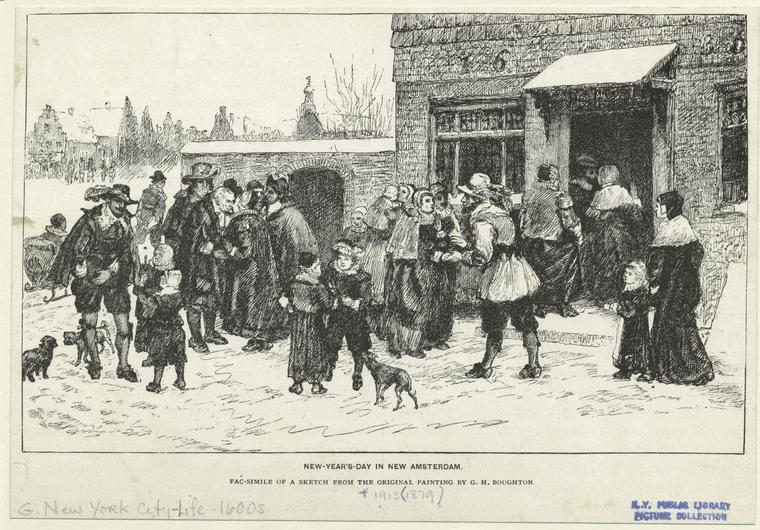Blog Archive
Happy New Year!
Holidays and historic foods go hand in hand, and new year’s traditions are no exception. In my home state of Alabama, my family’s New Year’s Day meal always involved collard greens, cornbread, and hoppin’ John, a savory mix of black-eyed peas, rice, and pork—a traditional southern meal believed to bring luck and prosperity in the new year.

New Year's Day in New Amsterdam, 1878, illustration by George Henry Boughton. Courtesy of New York Public Library.
In New York, the seventeenth-century Dutch custom of making New Year’s Day house calls and hosting open houses with plenty of food and drink on hand became a longstanding tradition. As new waves of immigrants arrived, Dutch pressed wafer cookies gave way to German New Year’s cakes and other specialties. One of our favorite historic gastronomy blogs recounts the popularity of new year’s punch in nineteenth-century New York in this post.
And what of New Year’s traditions among our 97 Orchard Street families? Last month we highlighted the festive Christmas food tray enjoyed by the Baldizzi family when they lived at 97 Orchard in the early 1930s. On New Year’s Eve, the family looked forward to another treat: sfingi, sweet doughnuts. (Here’s a modern sfingi recipe.)
Food writer Jane Ziegelman paints a delectable picture of this Italian new year’s tradition in 97 Orchard: An Edible History of Five Immigrant Families in One New York Tenement:
“Rosaria [Baldizzi] started the batter in the afternoon, mixing the flour, yeast, and water in a large pot, then covering it with a blanket and leaving it to rise. Just before midnight, she put a pot of oil on the stove, testing the temperature with a drop of water. When it splattered, the oil was sufficiently hot. The second the clock struck twelve, she dropped the first spoonful of batter, which caused the oil to bubble wildly, producing a loud zhooshing-ing sound. It took roughly a minute for the sfinge to cook up, puffy and golden. After scooping them from the pot, she dipped them in sugar. Then she fed them to the kids, still hot, so their first taste of the New Year would be sweet.”
Happy new year to you!
—Posted by Amanda Murray

